One of my favorite things about living in the American South is that crape myrtles grow here. This unique tree has year-round interest, with its sculptural form, multiple stems, long-lasting flowers and gorgeous exfoliating bark. Here in Atlanta, our crape myrtle population is very high, as the city went crazy and planted 1,000 of them along the streets in preparation for the 1996 Olympics. Get to know this deciduous tree better and see if it's a good choice for you.
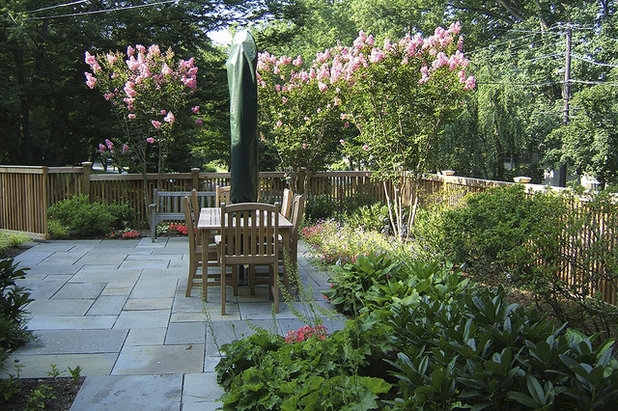
Cathy Carr, APLD
Botanical name: Lagerstromia indicaCommon names: Common crape myrtle, crepe myrtle
USDA zones: 7 to 9 (find your zone). If you’re at the coldest end of the spectrum (around or above the Mason-Dixon line), you’ll want to find a warm, protected microclimate for it.
Water requirement: Needs moist, well-drained soil but can tolerate drier conditions once it is established
Light requirement: Full sun
Mature size: 15 to 40 feet high and
6 to 15 feet wide
Benefits and tolerances: Can tolerate dry soils and clay
Seasonal interest: Summer and fall flowers; exfoliating bark; beautiful silhouette in winter
When to plant: Either after the last frost or at least four weeks before the first frost
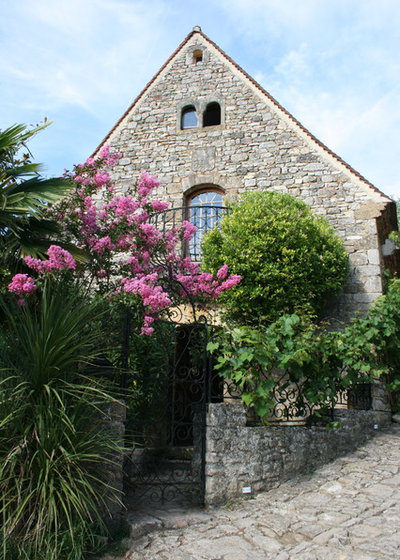
Stephmodo
Distinguishing traits. Crape myrtle's flowers are 8-inch panicles that bloom during most of summer and well into fall. The flowers vary in color by variety, with shades of pink, purple, red and white. Pruning off old flower heads can promote another round of blooms. When the plant fruits, it has brownish-blackish berries.
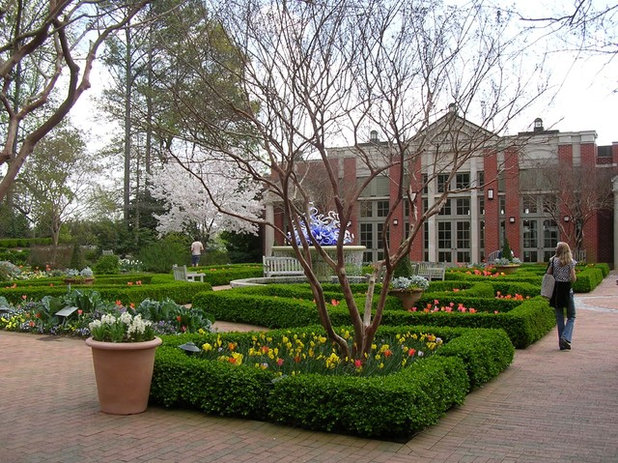
The tree is multistemmed and sculptural. Even before crape myrtle leafs out in the spring, its dense branching patterns and overall vase shape are sights to behold.
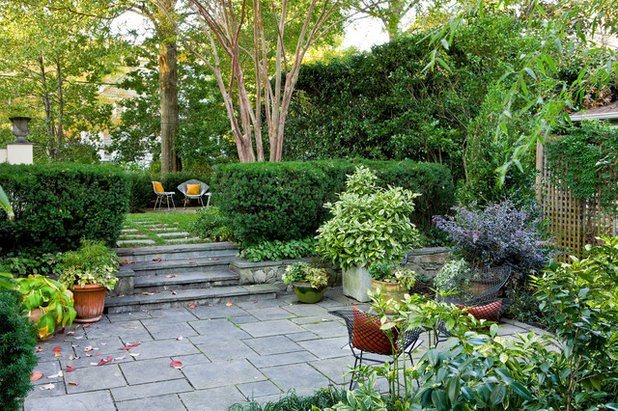
Scott Brinitzer Design Associates
The peeling bark is a beautiful blend of medium and light browns; it tends to roll as it peels, which adds a unique texture to the garden.
 How to use it.
How to use it. Two lines of crape myrtles form a striking allée. This is a wonderful way to create a striking path or entry sequence.
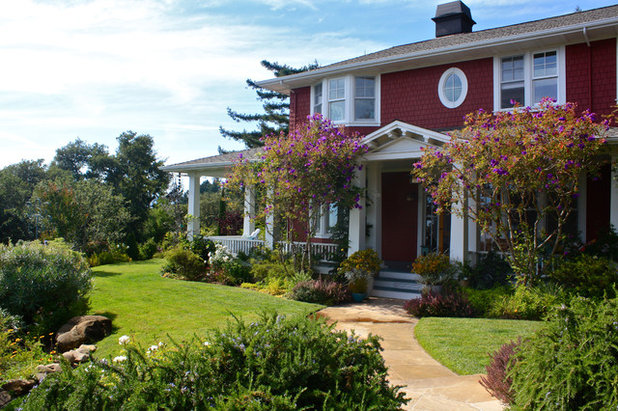
Shannon Malone
Crape myrtle is a wonderful ornamental tree to use anywhere in your yard. Make sure to allow enough room for its spread when planting it next to your house, sidewalk or driveway.
It's a good choice next to a patio (see first photograph). Its form adds sculpture, its flowers add color and its leaves provide dappled shade.
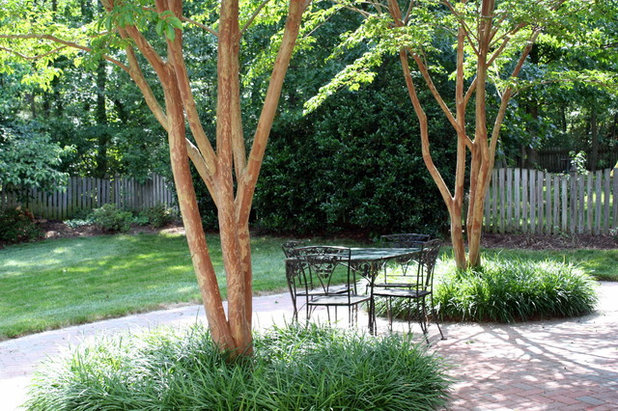
Laura Trevey
Planting notes. Because we've been cultivating these trees in the States for over 200 years, there are many varieties with different heights, shapes, hardiness ranges and flower colors. Check with your local nursery to see what's available in your area, then check the tag to find out what its mature size will be and choose a spot for it accordingly.
- Dig a hole that is approximately three times the width of the root ball and as deep as the root ball is high.
- Shake the root ball and loosen the roots that are all smushed together.
- Place the tree in the hole and fill in with dirt, packing it in firmly.
- Tamp the soil down and thoroughly water the tree. You'll want to water it every other day for the first month.
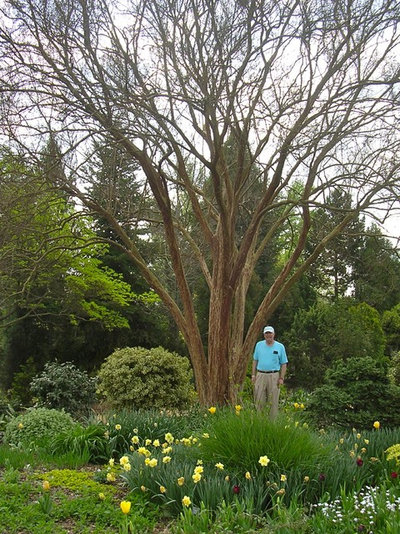 Pruning note.
Pruning note. Many people practice "crape murder." This is when they prune the tree down to just a few feet from the ground, transforming it into a thick shrub. Personally, I hate to see the wonderful and unique natural form of the crape myrtle mutilated like that, but to each his or her own.
I wanted to share with you the largest crape myrtle I've ever seen. It's in the Atlanta Botanical Gardens, and the person next to it is 6 feet, 4 inches tall.
Browse more great design plants





